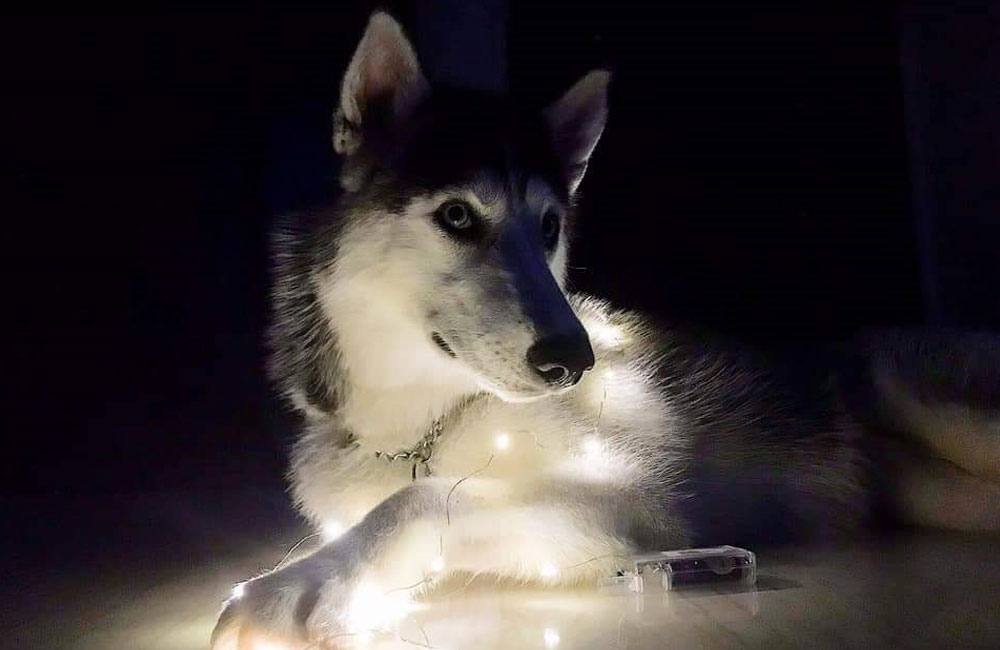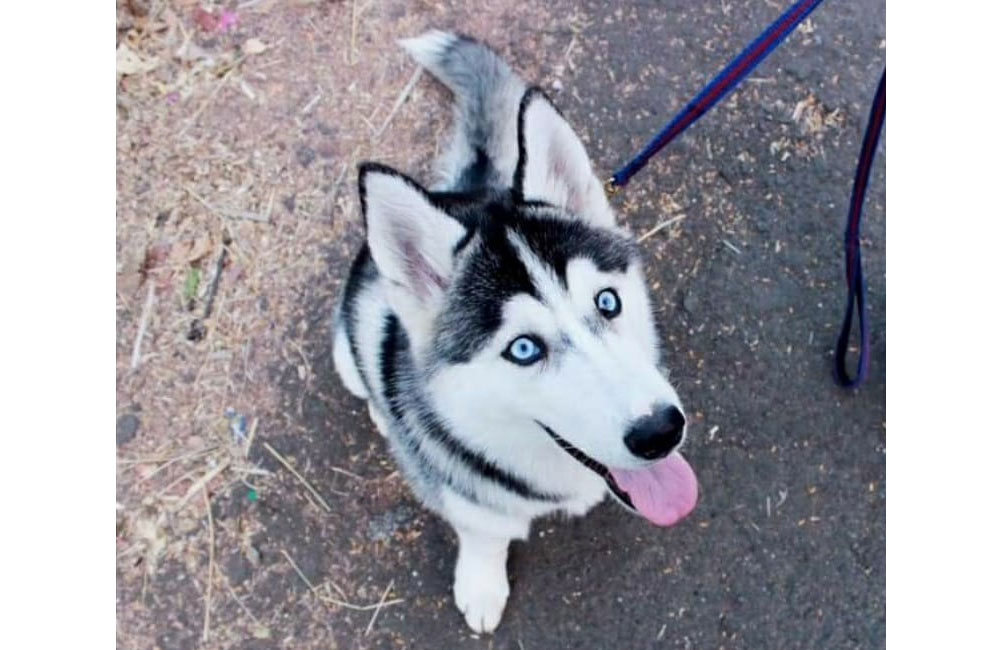
When Do Huskies / Alaskan Malamutes Stop Growing?
When you bring a Siberian Husky or an Alaskan Malamute puppy home, you may begin to wonder if they’ll ever stop growing. With how tall this breed can be it can seem like they grow and grow with no end, and as if they grow a foot overnight! In this article, we’ll discuss the details of the Huskies & the Alaskan Malamutes growing process, and at what age they stop growing along with some valuable tips on what you should do and what you should avoid.

Growing Process of a Puppy?
How many of us are aware that a puppy’s growth itself takes place in the bones within the cartilaginous areas referred to as the growth plates. The growth plates are located at each end of the bone and contain tissue that will act to extend the bone as the puppy grows.
The tissue in this region is flexible during this time and will begin to calcify and harden once the dog reaches its adult stage. This maturity period will generally last for the first 1.5-2 years of their life and stop completely at a maximum of 3 years.
This process of bone development in young dogs is why it’s so important to prevent puppies from activities that can possibly injure their growth plates. Since the growth plates are more fragile, any jumping or vigorous activity can lead to complications that can threaten the growing process of the puppies.
Do please be aware puppies have softer bones and are at a higher risk for fractures caused by falling off furniture, accidental dropping, having their limbs or feet being stepped on, or rough play with other dogs in the family. Mind-body awareness is a good focal point for both puppies and adolescent dogs. Slowing down movements, promoting hind end awareness and promoting a sense of balance help build confidence and prevent injury.
 /p>
/p>
So How Big Do Huskies Get?
The Husky is considered a medium-sized dog, but some are known to get quite tall once they reach their adult stage. Since the size of a Husky can vary, we’ll cover the size averages and ways you can better understand how large your Husky will be.
How Big Does a Female Husky Get?
An adult female Husky will generally weigh anywhere from 15.8 kgs to 22.6 kgs and can reach up to 22 inches in height.
How Big Do Male Huskies Get?
An adult male Husky will generally weigh anywhere from 20.5 kgs to28 kgs and can reach up to 21 inches to 23 inches in height.
Since the size of a Husky can vary, the most accurate way to know the possible adult size of your Husky pup will be to take a close look at the parents. By averaging the weight of your Husky puppy’s parents, you can come to an average weight range that you can expect for their future.
So How Big Do Alaskan Malamutes Get?
The Alaskan Malamute is considered a large sized dog, but some are known to get quite tall once they reach their adult stage. Since the size of an Alaskan Malamute can vary, we’ll cover the size averages and ways you can better understand how large your Alaskan Malamute will be.
How Big Does a Female Alaskan Malamute Get?
An adult female Alaskan Malamute will generally weigh 34 kgs and can reach up to 23 inches in height.
How Big Does a Male Alaskan Malamute Get?
An adult male Alaskan Malamute will generally weigh 38 kgs and can reach up to 25 inches in height.

Since the size of a Siberian Husky / Alaskan Malamute can vary, the most accurate way to know the possible adult size of your puppy will be to take a close look at the parents. By averaging the weight of your puppys parents, you can come to an average weight range that you can expect for their future.
When Does Your Puppies Stop Growing?
Since the standard Siberian Husky & the Alaskan Malamute can be so tall, they have a lot more growing to do in such a short time period. Because of this, you may see changes in their weight and height as each week passes.
Since the majority of their growth is during the first year (12 months) of their life, you will see a drastic change in their physical appearance during this time.
In general, the growing process of a puppy slows down significantly at the 1 year age mark and stops completely by 2 years of age.
Though they stop growing in height, they will often continue to fill out until they are 3 years old.
What Factors Affect a Husky’s Weight and Height?
The growing process in a dog takes place over such a short time period, that any major change in overall health or serious injuries can have an impact on their growing process. Some common factors that can affect a Huskies growth include:
Nutrition
While a Husky puppy is growing, they require a larger amount of calories, vitamins, and minerals to carry out the daily processes of a developing puppy. If a puppy does not receive the adequate nutrition they need, it can impair their growing process and lead to weakness in the bones themselves. Likewise, too much of calories, vitamins and minerals, calcium can be equally harmful for your pet.
Injury
Since the growth plate plays such a significant role in their growing process, any injury to the plate can result in stunted growth of the bone or complications that can later arise in the bone itself.
Because of this possibility, it’s best to avoid jumping from high places, vigorous activity, or any other behavior that could result in injury to the growth plate.
Genetics
While breed averages can help you guess your Husky puppy’s ultimate weight, it will all come down to their genetics. Their size as an adult will vary depending on each dog and how large their parents were in adulthood.

TIPS
In order to keep your Husky on the right track while they grow, there are a few tips to guide them in the direction for a healthy future. Some ways to ensure a healthy growing period include:
1. Adequate Nutrition
Always make sure to offer your growing Husky a diet made specifically for puppies in order to make sure they are getting every vitamin and mineral they require for healthy growth. Failing to feed them a puppy diet can result in complications as they grow, and leaves them more susceptible to injury.
We as breeder’s are very much in favor of a healthy, home - made, well rounded, nutritious, preservatives and chemical free diet especially formulated only by a qualified Pet Nutritionist.
We are fortunate to have Ms. Aakerschika Narayan Mishra, a Clinical Pet Nutritionist as our Nutritionist and give her all the credit for all of our adult healthy four legged kids at home.
From the year 2020, all our puppies are raised on a diet as advised by her.
We have already mentioned, the majority of a puppy’s growth is during the first year (12 months) of their life, hence let us look at the stages of a diet for the first 12 months.
1st Diet Plan – Day 30 to Day 60
2nd Diet Plan – 2 Months to 4 Months
3rd Diet Plan – 4 Months to 6 Months
4th Diet Plan – 6 Months to 8 Months
5th Diet Plan - 8 Months to 12 Months
Thereafter, every Diet Plan will be for every 12 months.
Catch up with Ms. Aakerschika Narayan Mishra at https://gofurrealnutrition.com/
2. Prevent injury
Since the growth plates are so important, it’s essential to protect your puppy from injury as often as you can. Try your best to prevent them from jumping off furniture, make sure they are not involved in vigorous physical training during this period, and make sure they are resting adequately each day.
Here are some basic exercise guidelines for your puppy:
• Allow self-directed play on varied moderately soft ground such as yards or gardens.
• Avoid repetitive exercise such as long hikes or long walks, especially on hard surfaces.
• Avoid going up and down stairs until the puppy is three months of age or older.
• Don’t allow jumping or jump downs higher than “wrist” height until the pup is six months of age; and no higher than elbow height until 18 to 20 months old.
• Avoid pulling during tug games.
• Allow short training periods for learning commands.
• Avoid giving Rubber or Plastic Toys.
• Always use a Shoulder Harness.
We love our pets to jump and play, for example to jump on to the sofa and jump down. Please kindly AVOID.
Climbing and getting down the Staircase unsupervised should be avoided at all times.
3. Vaccinate
Any major medical complication during puppyhood can result in possible difficulties as they age. By vaccinating your Husky puppy you can help protect your pup against infectious disease, and help them have a healthy and happy “childhood.”
4. Regular Health Tests
Often when speaking with pet owners, we are told that their pets are absolutely healthy and this is stated on the basisof the activity level of the pet or the pet not having skin allergies etc.If you really are concerned about the health of your pet, we seriously recommend blood and urine tests every quarter or half yearly. Once you have done the tests only then can you ensure that you have a healthy pet. If you have not already done the tests, please do so. Don’t let the ailments reach levels where it is difficult to cure. It will hurt you to see your loving pet in pain.

